HOWARD L. LEVINE
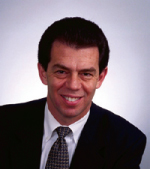
president of BioProcess Technology Consultants, Inc.
How long have you worked for your current employer, and where did you work before that? I’ve worked for my current employer since 1994. Before BioProcess Technology Consultants, I worked as vice president of manufacturing operations for Repligen.
What degrees do you hold, and from where? PhD in chemistry from the University of Chicago (1978); BS in chemistry from the University of Southern California (1975)
Who will be most interested in the subject matter of your discussion session (Biosimilars: Where Are We Now?), and what do you expect them to “take away” with them? Anyone interested in the topic of biosimilars will be interested in this session. We will cover the technical, regulatory, and economic challenges faced by companies attempting to seamlessly transition biosimilar replacement products into the marketplace. The “take-away” messages from this workshop will be ideas and approaches to biosimilar development.
JOANNE T. BECK
plant manager at Abbott Bioresearch Center
How long have you worked for Abbott Bioresearch Center, and where did you work before that? I’ve worked at Abbott Bioresearch Center (ABC) since 2004. I am currently the plant manager (since 2007). Before that, I was director of biologics manufacturing (2006-2007). From 2004 to 2006, I was the director of biologics program management at ABC. From 2002 to 2004, I was director of process development and manufacturing at Altus Pharmaceuticals. From 1997 to 2002, I worked at Amgen (Thousand Oaks) where I was first a scientist and then the associate director of the purification process development department. From 1993 to 1997, I was a scientist in the recovery sciences department at Genentech Inc.
What degrees do you hold, and from where? I received a BA in chemistry in 1983 from Lewis and Clark College and a PhD in biochemistry and molecular biology from the University of Oregon Medical Center in 1989. I completed postdoctoral fellowships at University of California San Francisco (1989-1992) and Genentech Inc. (1992-1993).
When and why did you get involved in the biotechnology industry? What interested you the most about it? I started my career in biotech as a postdoc at Genentech and got hooked immediately. Everyone was infused with excitement and purpose of discovering, developing, and producing drugs that saved or significantly improved people’s lives. The company was small, and everyone was hands-on. While I worked at Genentech, my father had a heart attack and was treated with one of our drugs, TNK-tPA, which saved his life. Need I say more?
ABBOTT Bioresearch Center (ABC) is a drug discovery and biologics manufacturing company that is part of ABBOTT Laboratories, one of the world’s leading healthcare companies. Established in 1989, ABC is adjacent to the Worcester Biotechnology Park and the University of Massachusetts Medical Center in Worcester, MA, 35 miles west of Boston. The >420,000-ft2 facility is located on a 30-acre landscaped site and houses ∼700 employees, with ∼400 of them in operations. Scientists at ABC focus on new therapies for rheumatoid arthritis, asthma, multiple sclerosis, and osteoarthritis using both small-molecule and antibody approaches. ABC is also the center of excellence for biologics development and manufacturing for Abbott.
Which biologics does Abbott have currently on the market — and which are in later stages of clinical development? Humira is Abbott’s biologic for the treatment of rheumatoid arthritis (RA), plaque psoriasis, Crohn’s disease, psoriatic arthritis and ankylosing spondylitis — autoimmune disorders in which a human protein, tumor necrosis factor (TNF), plays a role in disease activity. Humira is a fully human monoclonal antibody that blocks TNF, reducing inflammation. It is also in development for ulcerative colitis, inflammation of the large intestine. With its efficacy in multiple autoimmune diseases in a single, well-established product, Humira will continue to bring relief to thousands of patients for years to come.
Beyond Humira, we advanced our next-generation biologic, ABT-874, in late-stage development for Crohn’s disease and psoriasis. ABT-874 is a fully human monoclonal antibody designed to target and neutralize interleukin-12 (IL-12) and interleukin-23 (IL-23), two proteins that regulate inflammatory response. Phase 2 psoriasis results demonstrated that more than 90% of patients treated with ABT-874 achieved a significant reduction in their disease — results previously thought to be unattainable.
What kinds of strategic planning tools and concepts (as discussed by presenters in your session) do you have experience with at Abbott Bioresearch Center? Is the company using these mainly in development of new products — or is it revisiting marketed products too? What are the basic precepts and advantages of product life-cycle management? Abbott reviews product strategy throughout the life cycle of every product. Comprehensive reviews are conducted at critical milestones in product development and commercialization. On the CMC side, reviews are focused on aligning the different functions, identification and mitigation of risk, resource alignment, business and project management excellence, technology transfer, technical and quality issue resolution, and continuous process improvement. For marketed products, reviews are focused on assessing postlaunch performance and life-cycle management strategy.
Who will be most interested in the subject matter of your session at the BPI Conference & Exhibition? Operations management is the main audience for the session.
What do you expect them to “take away” with them? They’ll get ideas on how to improve production economics that they can use. Improving production economics can be achieved by implementing process improvements, lean/six sigma, effective planning tools, and selective outsourcing, among other things. The session includes presentations that address key aspects.
Which presentations/sessions at the conference are you most looking forward to attending? There is huge pressure to improve the economics of production (I use the term broadly), so I am interested in talks that address the topic: for example, Beth Whitacre’s (Eli Lilly) talk on using lean/six sigma and the presentations by Alison Moore (Amgen) and Joe McKinstry (ZymoGenetics) on production planning in light of uncertain demand. I’m also looking forward to Jeanne Holm’s presentation on knowledge management for technical collaboration across generations. We need new/different perspectives on how to access and reuse the knowledge gathered over many products to support future products and to help drive innovation in our industry.
And what were your main concerns in helping to put together the Production/Economics session? selecting presentations that are novel and current, that provide useful information to the audience, and stimulate meaningful discussion afterwards
ANDREW COCKSHOTT
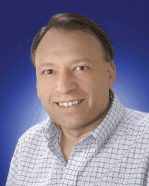
manager of manufacturing science and technology at Eli Lilly
Andrew Cockshott has worked in bioprocess development and manufacturing at Eli Lilly for 24 years. As a scientist and then a manager of technical services groups, he has been involved in the process scale-up and technical transfer of numerous recombinant protein processes. He holds a BS in chemical engineering from Cambridge University and a PhD in biochemical engineering from University College London.
Which biologics does your company have currently on the market — or in later stages of clinical development? Lilly’s major biologics on the market are Humulog, Humulin, Humatrope, Forteo, and Xigris.
What kinds of production — economics-related tools and concepts do you have experience with there? We use all the standard tools including SAP, six sigma, and so on.
Who will be most interested in the subject matter of your session at the BPI Conference & Exhibition? For the “Production and Economics of Biopharmaceuticals” track, the major interested parties will be those either manufacturing or about to manufacture biologics — typically from the larger biotech and pharma companies.
What do you expect them to “take away” with them? They should get some insights into where the current trends and issues are for biologics manufacturing. Key topics are regulatory changes and improving economics (e.g., through the use of six sigma, outsourcing).
Which presentations/sessions at the conference are you most looking forward to attending? the featured presentations and keynotes on Wednesday 24 September (FDA manufacturing initiatives, postregistration changes, and biosimilars)
SCIENTIFIC ADVISORS
Joanne T. Beck, plant manager at Abbott Bioresearch Center
Wolfgang Berthold, chief technical officer of Biogen Idec
William P. Botha, director of manufacturing at Baxter Healthcare Corporation
Andrew Cockshott, manager of manufacturing science and technology at Eli Lilly and Co.
Jon T. Conary, senior director of manufacturing at Human Genome Sciences, Inc.
Howard L. Levine, president of BioProcess Technology Consultants, Inc.
Duncan Low, scientific executive director of process development for Amgen Inc.
Rhona M. O’Leary, director of bioprocess development at Genentech, Inc.

KEMIE GUAIDA (www.istockphoto.com)
And what were your main concerns in helping to put together the Production/Economics track? A specific concern was that we were going to have too many talks around quality by design rather than a focus on issues that may have a more direct impact on production economics such as outsourcing and lean manufacturing.
Q&A with the SpeakersROB BRYANT
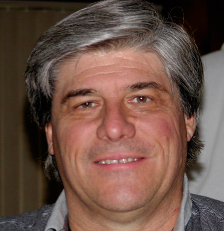
vice president of quality (lean/six-sigma program lead master blackbelt) at Computer Sciences Corporation
KEYNOTE “How to Motivate Staff to Implement Lean Manufacturing to Raise the Bottom Line ,” 8:15 am Tuesday 23 September 2008: Experience from more than 1,000 process improvements has demonstrated the elements necessary for success of a lean program: passionate executive sponsor, endorsed project charter, engaged team, and a phased approach with realistic goals. Gain strategic tips for incorporating value stream mapping, design of experiments (DOE), mistake-proofing, failure modes and effects analysis (FMEA), root cause/risk analysis, statistical process control (SPC), process mapping, process management performance metrics, trend analysis, process re-engineering, analysis of variation (ANOVA), benchmarking and more.
How long have you worked in biotech? I teach continuous improvement methodologies in all industries with some experience in BioTech. (In his previous roles as vice president of quality and compliance and senior executive of quality, environment, health, safety, and workers comp at DynCorp, he supported doubling the size of the organization through use of quality/performance tools for more than 100 sites and 20,000 employees.)
What degrees do you hold, and from where? Tarrant County Junior College (AA in biology); University of Texas at Arlington (BA in geology); LeTourneau University (BA in business administration); LeTourneau University (masters in business administration); University of North Texas (PHD-level work)
When and why did you get involved in the biotechnology industry? CSC has a healthcare division with some interest in biotechnology.
What interested you the most about this work? paralysis research (Mr. Bryant learned to walk again with braces and crutches after a 55-foot fall that left him a paraplegic. He has set two world records: the longest walk by a paraplegic — 24 miles — and the Guinness World Record for Rowing — 3,280 miles in 119 days on a rowing machine.)
Who will be most interested in the subject matter of your presentation at the BPI Conference & Exhibition? everyone
What do you expect them to “take away” with them? motivation and a hunger for business process improvement
This year’s BPI Conference is happening in Anaheim, CA, home to the original Disneyland. Have you ever been there before? Yes, I live in Temecula, CA
Do you have any recommendations for fun outside the conference, great restaurants to try, etc. that you’d like to share with fellow conference goers? Legoland is fascinating and would interest engineering types.
Which of the concepts listed in your abstract have been most implemented in your industry? FMEA, process mapping, and lean.
What direct correlations do you think can be made to the biotechnology industry? Lean/six-sigma can give them the results in improving their processes.
BETH WHITACRE
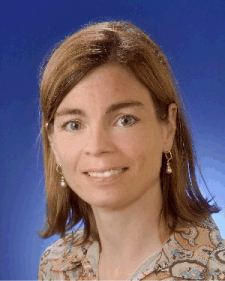
quality control team leader at Eli Lilly and Company and certified six sigma black belt has been in the biotech industry for 14 years.
“Case Studies in Using Lean/Six-Sigma to Drive Optimization and Significant Financial Benefit,” 8:45 am Tuesday 23 September 2008: Lean/Six-Sigma can be creatively applied to significant business opportunities to yield better and faster business outcomes. This presentation will review case-study examples of the use of Lean/Six-Sigma to drive optimization and significant financial benefits for some common manufacturing business initiatives.
Who will be most interested in the subject matter of your presentation at the BPI Conference & Exhibition? People looking for ways to remove nonvalue-add and increase process cycle efficiency
What do you expect them to “take away” with them? The take-away is that they can look at the case studies and see possibilities for application in their own environments, ranging from direct to creative replication.
And which other presentations/sessions are you most looking forward to attending? I will be interested in seeing other sessions with a lean and six-sigma focus.
Is Eli Lilly finding ways to incorporate these concepts into products/processes that are already approved for marketing, or is most implementation confined to products/processes that are still in development? Do you see any problems with motivation of staff to embrace these ideas? All of my six sigma efforts have been applied to marketed product processes. Lilly is broadly applying lean/six sigma across the organization from development to manufacturing to sales and marketing. Upper management stands firmly behind the six-sigma effort, and the culture is shifting in a positive direction as a result.
How long have you worked in biotech? What degrees do you hold, and from where? When and why did you get involved in the biotechnology industry? What interested you the most about this work? I have been in the pharmaceutical industry for 14 years; 12 of those working with biotech molecules/processes. I am drawn to the concept of molecular manipulations that yield active ingredients to be used for a therapeutic end (as opposed to molecular synthesis). I also like the fact that a lot of these products are more “natural” with regard to the human body. In biotech, human biology concepts are used as a fundamental part of the design platform for the therapies that are developed.
SRINIVASAN RAMAN
general manager of operations in biologicals manufacturing at Biocon Ltd.
“Profitability vs. Affordability of Biosimilars,” 11:00 am Wednesday 24 September 2008: The talk will cover the current biosimilars scenario, delving into the debate around balancing the aspects of “profit for sponsors” vs. “affordable medicine for patients,” and discussing innovative approaches to enhancing the cost effectiveness of biosimilar products.
Who will be most interested in the subject matter of your presentation at the BPI Conference & Exhibition? The subject matter should be interesting to all who are at the interface of science and business of biotechnology.
What do you expect them to “take away” with them? The key “take-away” would be an unbiased view of the emerging status of “biosimilars.”
And which other presentations/sessions are you most looking forward to attending? I am looking forward to the sessions dealing with latest developments in process biotechnology.
Do you think biosimilar manufacturers will be first-adapters of new expression systems and technologies? Or can patent-holders use new technologies to improve the cost-effectiveness of their processes and compete on more level footing price-wise with biosimilars? A very interesting question! I don’t want to let the cat out of the bag soon … but yes. Innovators adopting the new technologies for older products is a serious possibility.
How long have you worked in biotech? I’ve been working in the field of biotechnology for about 20 years.
What degrees do you hold, and from where? I hold my bachelor’s degree in chemical engineering, and I earned my masters in biochemical engineering from the Indian Institute of Technology in New Delhi, India.
When and why did you get involved in the biotechnology industry? My serious flirtations with biotech started when I was studying chemical engineering.
What interested you the most about this work? The aspect that keeps me most interested in this field is the seemingly limitless potential for harnessing the living systems to our purpose.
This year’s BPI Conference is happening in Anaheim,CA, home to the original Disneyland. Have you ever been there before? Do you have any recommendations for fun outside the conference, great restaurants to try, etc. that you’d like to share with fellow conference goers? I believe this is a wonderful choice. The biotech field is at cross roads and the location — in a way — symbolizes the need for more creativity in the biotech workplace. I haven’t been to Anaheim before, and I look forward to being there.
BARBARA ESCH

director of industrial customer business in the corporate division of biopharmaceuticals at Boehringer Ingelheim GmbH
“How Similar Is a Biosimilar?” 11:30 am Wednesday 24 September 2008: Tissue-plasminogen activator (t-PA) is a well-characterized product. The biosimilar recently approved in India shows significantly high similarity in its carbohydrate moiety. However, its impurity profile and aggregates are significantly higher. The thrombolytic activity in various arrays is significantly below that of the innovator’s t-PA. From a protein analytical perspective and the consequences for the patient benefit this biosimilar cannot be considered to be similar.
How long have you worked in biotech? What degrees do you hold, and from where? Barbara Esch obtained her MSc in biology at the University of Tübingen in 1991. In the same year she joined Boehringer Ingelheim Pharma KG in Biberach, Germany, at the department of biopharmaceutical production for her PhD, which she received in 1995. In 1996, she was appointed as representative for Boehringer Ingelheim Pharma KG in the hospital business area for the products Actilyse, Imukin, and Alveofact and later in 1998 for the HIV drug Viramune. From 1999 to 2002 she specialized at Boehringer Ingelheim Pharma KG in the field of oncology, being responsible for marketing and sales of Beromun (TNF-alpha) in Germany and South Europe. Since 2003, she has been director for industrial customer business of biopharmaceuticals in the corporate division of biopharmaceuticals at Boehringer Ingelheim GmbH in Ingelheim, Germany.
MIRIAM MONGE

vice President of marketing and disposables implementation UK at Biopharm Services
“Disposables: Process Economics — Selection, Supply Chain, and Purchasing Strategies,” 8:45 am Wednesday 24 September 2008: A new facility project implemented disposables for a broad spectrum of process applications. Key considerations included establishing a disposables use philosophy to meet the needs of the engineering project, strategy decisions to manage disposable vendors, and an integrated supply-chain approach including product standardization. Other key considerations included life-cycle and risk-management analysis along with development of a disposables validation strategy.
Who will be most interested in the subject matter of your presentation at the BPI Conference & Exhibition? All those involved in biopharmaceutical manufacturing and working toward achieving operational excellence — manufacturing, validation, engineering, supply chain, and procurement personnel — will be potentially interested in this presentation.
What do you expect them to “take away” with them? They will take away knowledge of end-user experience of project managing selection and implementation of disposables in the context of a new facility project. This perspective will look at both that of the supplier and the user and examine how to minimize risk and maximize value for money from a long term adoption of disposables by the user. The talk will illustrate this through reference to recent projects and identify key lessons that have been gained from this experience.
And which other presentations/sessions are you most looking forward to attending? The BioProcess International Conference is probably the most complete conference of the year in my opinion, working through all aspects of biomanufacturing. There are many subjects that I would like to attend, so it will be difficult to choose. The special strategy discussion forum (“Adopting New Technology: The Cost of Change”) looks extremely interesting, as does “Strategic Planning for Biopharmaceuticals: Challenges for a Maturing Industry.” I am also pleased to see a concurrent conference on formulation strategies for protein therapeutics: In my opinion, this should be an integrated part of biomanufacturing strategy, whereas traditionally it has been kept quite separate.
What kind of process is involved in the case study you’ll be presenting? Or was it a multiproduct/multiprocess facility? Was it based primarily on disposables with few reusable components — or more of a mix of single-use and stainless steel technologies? The case study is based on a project that is designed as multiproduct facility based on mammalian cell culture. Following an analysis, the optimal fit of disposable and traditional equipment was determined for the whole process. This analysis included a technical evaluation and used simulation and cost modeling software to determine value for money of any proposed disposable technology. My presentation will focus on selection, supply chain, and purchasing strategies for disposables. As disposables are gaining market share, being implemented for an increasing number of process steps, the decision to implement disposables and to analyze their potential impact on a new facility needs to be made at the conceptual design phase. Many biomanufacturing organizations and engineering groups struggle with the development of procurement strategies linked to these relatively new technologies. This presentation will give an insight into how these are tackled for a facility project where many of these questions were addressed.
How long have you worked in biotech? I first started working in the pharma industry in 1989.
What degrees do you hold, and from where? MBA from Marseille International business school, EuroMed.
When and why did you get involved in the biotechnology industry? What interested you the most about this work? I was based in Germany for CMB Packaging (CarnaudMetalbox), working in its medical device division. In 1994, I started at Stedim Biosystems based at its headquarters in Aubagne, France. Stedim was a medical device manufacturer that was just moving into the field of disposable systems for biomanufacturing and as such was a pioneer in this field. The adoption curve for disposables was slow to start with, but within about three to four years the level of interest in disposables had grown enormously. I was spending time working closely with clients’ processes and seeing how disposables could be most effectively used.
In 2000, I was appointed as Stedim Biosystems’ marketing director. There the challenge was to increase the acceptance of disposables. At that time, disposables were mainly used for support solution (media and buffer hold). I engaged Biopharm Services’ specialized bioprocess consultants to work with us to understand industry trends and what the end-users really wanted to see in disposable manufacturing. The requirement for mixing systems and disposable bioreactors came on the radar very early as did the need for aseptic connectors. Beyond that, we used Biopharm Services’ process, cost modeling, and simulation software platforms to analyze what impact implementation of disposables could have on a facility. What I found fascinating about that work was introducing new technologies into a fast growing, fast changing dynamic biotech environment, in which, in many cases, we were able to quantify the benefits to the end-users using models.
I have recently moved to join Biopharm Services to develop the disposables implementation practice that BPS currently runs with a group of high level bioprocess engineers. This service is of course supported by the modeling and software tools mentioned earlier and a strong bioprocess knowledge management program.
ALISON MOORE
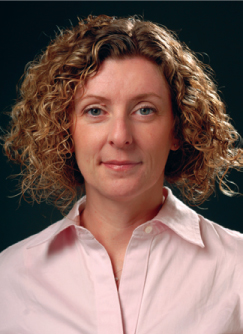
vice president and site head for Amgen Inc.
“Managing Production in Light of Uncertain Demand Forecasts,” 2:30 pm Tuesday 23 September 2008: During the first few years of commercial production in a new market, there can be significant uncertainty in demand forecasts. The relationship between demand and capacity for biologics can be very linear, so to accommodate some variability, elasticity can be added in the form of plant-use choices and inventory control that help to moderate the impact of demand swings. These approaches will be presented.
Who will be most interested in the subject matter of your presentation at the BPI Conference & Exhibition? Plant managers, schedulers, supply chain professionals, and people who do process fit analyses will most likely be interested in my presentation.
What do you expect them to “take away” with them? They are most likely to take away with them Amgen’s perspective on manufacturing flexibility.
What types of variables affect demand of biotech products? Variables that affect demand on the upside are effective marketing, negative information about a competitor molecule, new clinical data release, lowered pricing, and so on. On the downside are negative trial data, poor marketing, positive information, or competitive pricing from a competitor.
How long have you worked in biotech? I have worked in biotechnology for 15 years.
What degrees do you hold, and from where? I have a bachelors degree in pharmacology and a PhD in cell biology from Manchester University in England.
When and why did you get involved in the biotechnology industry? I became involved in the biotechnology industry when I became a postdoctoral fellow at Genentech.
What interested you the most about this work? I love the application of biology in the generation of therapeutics.
This year’s BPI Conference is happening in Anaheim, CA, home to the original Disneyland. Have you ever been there before? Do you have any recommendations for fun outside the conference, great restaurants to try, etc. that you’d like to share with fellow conference goers? I have been to Disneyland several times with my daughter who is now 4 years old. I don’t ever spend anytime outside the resort though, so can’t make any recommendations.
RICK JOHNSTON AND PHILIP KAMINSKY
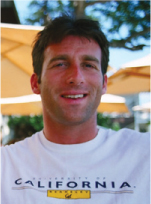
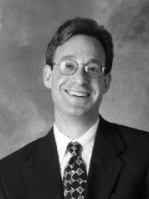
Rick Johnston is codirector of the Center for Biopharmaceutical Operations at the University of California, Berkeley; Philip Kaminsky is an associate professor in the department of industrial engineering and operations research at the University of California, Berkeley
“Research in Biopharmaceutical Operations: Advancing the State of the Art,” 2:00 pm Tuesday 23 September 2008: Biopharmaceutical research has traditionally focused on drug discovery. But with a maturing industry facing cost pressures, there is increased need for precompetitive research into broader issues around manufacturing and logistics, an approach that has greatly benefited other high-technology industries. We review several projects under way at the UC Berkeley Center for Biopharmaceutical Operations, focusing on explorations of risk and its impact across the supply chain.
Who will be most interested in the subject matter of your presentation at the BPI Conference & Exhibition? What do you expect them to “take away” with them?
Phil: Those people involved in operations (both on a facility level and a supply network level) and especially those people concerned with risk mitigation in the supply chain should be interested in what we have to say. In particular, we hope to impress on them that there is a science of operations and risk management that is well developed and well understood in many other industries — and that there are many lessons, tools, and approaches that can be applied to their supply chains.
Rick: I would expect those in operations would be interested, particularly those looking at issues of supply chains, risk, technological innovation, and operational excellence. The key take-away message should be that there is a considerable body of research and practical experience in decision making in other industries, and that it could be easily applied to biotechnology. The semiconductor industry is a great example because it is similar in a number of respects: a high-tech industry, expensive plants, tightly controlled process, and so on.
How long have you worked in biotech? What degrees do you hold, and from where? When and why did you get involved in the biotechnology industry? What interested you the most about this work?
Phil: My doctorate is in operations research and management science from Northwestern University, and I’ve been working with biotech companies for around three years now. Along with several of my colleagues on the faculty of the Industrial Engineering and Operations Research Department at UC Berkeley, I noticed that the biotech industry was starting to pay closer attention to issues of operations, supply chain, and risk management than it had previously. This is in many ways similar to a transition that many technology industries go through, and I became very interested in understanding what techniques and approaches developed for other industries are applicable — and what tools, techniques, and approaches need to be developed from scratch.
Rick: (Rick Johnston has worked in biotech operations for five years, specializing in tools to advance the state of the art in decision making for the industry.) I hold advanced degrees in decision analysis from Stanford and operations research from the University of California at Berkeley. I originally became involved in this area after seeing how much could be learned from other industries — such as the semiconductor industry — in advancing biotech.
MICHAEL W. GLACKEN
director of biologics process development at Millennium Pharmaceuticals
“Managing a Biologics Supply Chain Using a Fully Outsourced Manufacturing Model,” 11:15 am Tuesday 23 September 2008: Millennium has managed the supply of several different biologics at all stages of clinical development using a fully outsourced manufacturing model including drug substance, drug product, and release assays. Experiences related to process transfer and documentation, facility fit, demand planning, and validation activities for launch will be presented. The importance of maintaining a fully functional internal process development group and pilot plant will be emphasized.
Who will be most interested in the subject matter of your presentation at the BPI Conference & Exhibition? Anyone who outsources or is thinking of outsourcing the manufacturing of biopharmaceuticals might be interested in my talk.
What do you expect them to “take away” with them?
The take-home message is that outsourcing manufacturing makes process development even more important, especially before transferring the process to a contract manufacturing organization.
What products does Millennium currently market? Does the company subscribe to lean/six-sigma or other operational excellence concepts? Are there challenges to doing so when outsourcing so much work? Millennium’s commercial product is Velcade, which is chemically synthesized. My presentation will be about outsourcing biopharmaceutical production to support clinical development. Our most advanced candidate will start Phase 3 clinical trials this year. Note: On 15 May 2008, Millennium was acquired by Takeda Pharmaceuticals. Takeda has many commercial products, but as of yet no biopharmaceuticals.
How long have you worked in biotech? What degrees do you hold, and from where? When and why did you get involved in the biotechnology industry? What interested you the most about this work? I have been in biotech for about 27 years, about 10 of those in academia as a student and then an assistant professor of chemical engineering at Rice University and the last 17 in industry. I have a BS in chemical engineering from the University of Maryland and a ScD in biochemical engineering from MIT.
